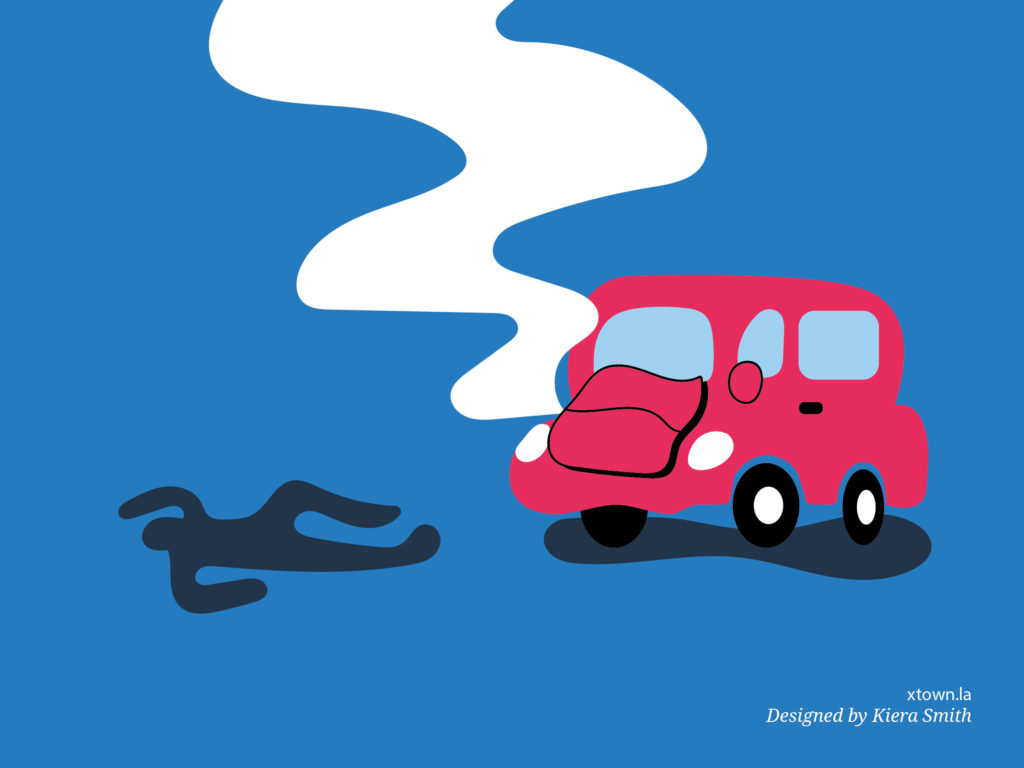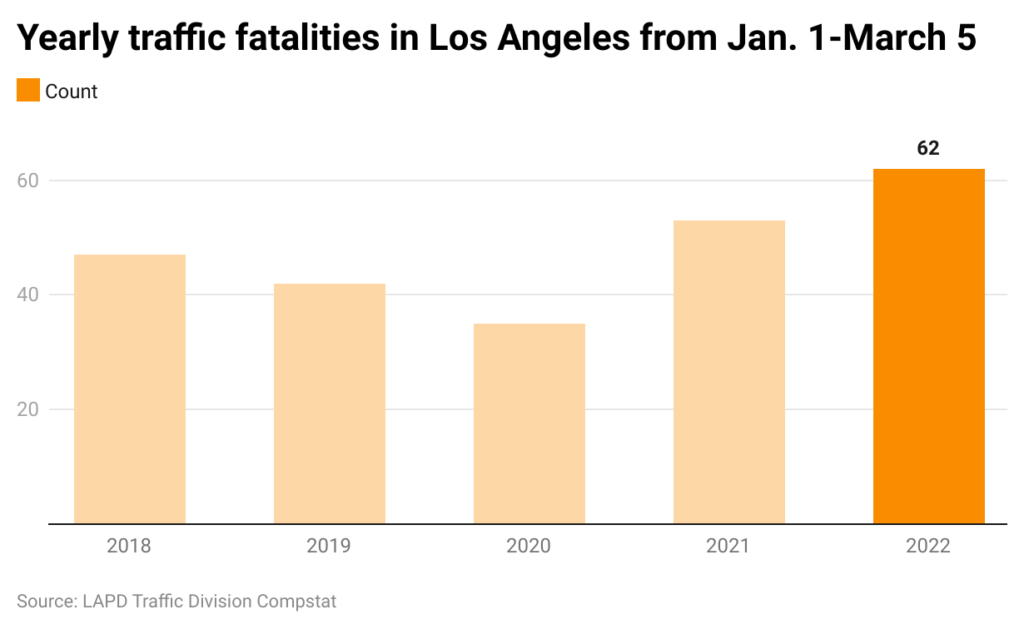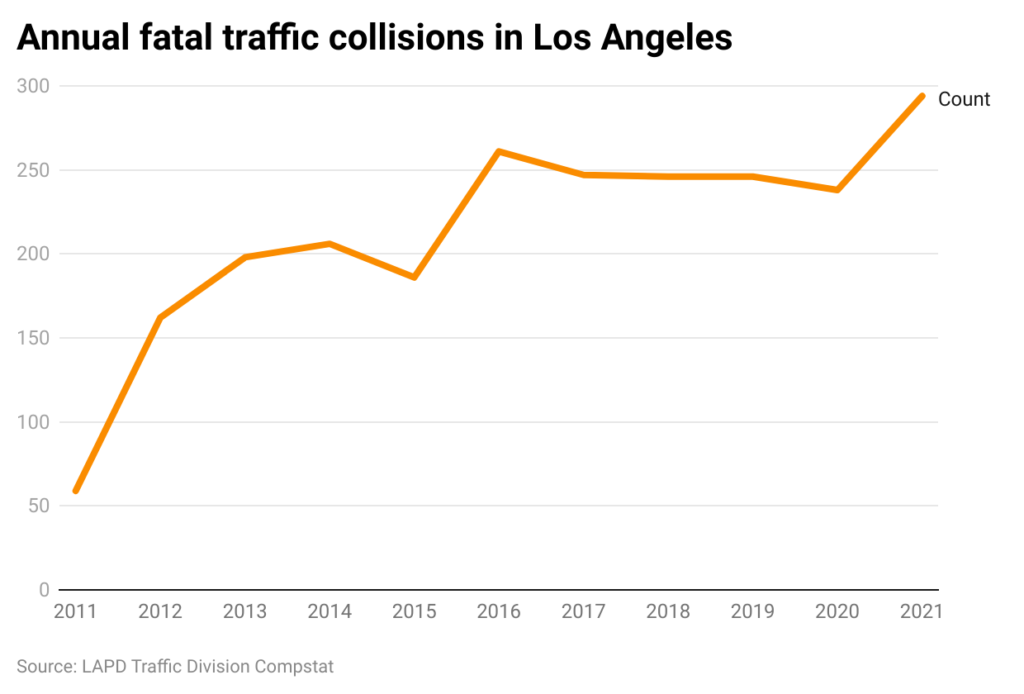More people are dying in Los Angeles auto collisions

The city of Los Angeles is seeing a harrowing spike in people killed in car crashes. From Jan. 1-March 5, 62 people died in vehicular collisions, compared with 53 during the same period in 2021, according to LAPD Traffic Division COMPSTAT data.
The current year’s tally marks a 77% increase over the 35 people who died in the equivalent period in 2020. That was before the onset of the coronavirus pandemic.
During a Los Angeles Police Commission meeting on March 15, Assistant Chief Beatrice Girmala, said “sadly but not surprisingly,” the largest increase in deaths this year involved people struck by vehicles.
From Jan. 1-March 5, 33 people died after being hit by a car. That is a 57% increase from the 21 killed during the same period last year.

LAPD Captain Brian Wendling, who oversees the department’s West Traffic Division, indicated that some of the deaths could have been prevented, as they involved people jaywalking at night.
At least three people who were killed by a car this year were unhoused. Wendling thinks the number of people experiencing homelessness killed or seriously injured in traffic collisions is likely higher due to under-reporting or how deaths may be classified by the County Coroner’s department.
Reducing speed limits
The rise in deaths comes despite efforts by city leaders to make the roads safer. In 2015, Mayor Eric Garcetti launched Vision Zero, an attempt to eliminate traffic deaths in Los Angeles by 2025.
It has not gone as anticipated. In 2015, 186 people died in automobile collisions. Last year, 294 people were killed.

What is happening on Los Angeles roads is not out of line with national trends. Traffic deaths spiked across the United States during the pandemic, with the National Highway Safety Administration blaming factors such as an increase in reckless driving. Other theories for the rise include that when auto traffic decreased, people began driving faster, posing more danger for those involved in collisions.
Still, that is little solace to people worried about the situation on local streets. John Yi, the executive director of Los Angeles Walks, a pedestrian advocacy organization, said the city needs to look at traffic fatalities as a health issue.
“Things have become more dangerous as we see in the media, but there’s been inaction by the city, and I think that goes to show that things are only going to get worse,” he said.
New steps are being taken to make the streets safer. On March 7, Garcetti signed an ordinance, which had been passed Feb. 22 by the City Council, that will lower the speed limits on 177 miles of streets in the city. Twenty-eight of these street segments are on what is labeled the Vision Zero High Injury Network, where the highest concentrations of traffic deaths and severe injury crashes occur.
[Get COVID-19, crime and other stats about where you live with the Crosstown Neighborhood Newsletter]
The move was a result of the passage of AB-43, a state bill authored by Assembly member Laura Friedman that grants cities more authority to control speed limits.
“The City of Los Angeles was forced to increase speed limits across the city because of an arcane state law that allows speeders to set the speed limit,” Friedman said. “It’s a flawed policy that’s had devastating consequences.”
Unsafe roads
Last year the LAPD recorded 1,137 serious injuries from car crashes in the city. That was the highest figure since 2016.
From Jan. 1-March 5, Downtown, home to hundreds of thousands of office workers and residents, many of whom drive solo, recorded 84 traffic collisions that resulted in a serious injury, the highest total of any neighborhood in the city. The next most-impacted communities were Van Nuys and Westlake (both with 48 reports of serious injuries).
In that period, traffic data from the Los Angeles Police Department shows that the most frequent days for fatal or serious crashes were Saturdays and Sundays, and that about 69% of those seriously injured in car crashes were men, compared with 31% being women.
According to the Insurance Institute for Highway Safety, nearly every year from 1975 to 2019, the number of males killed in traffic deaths was more than twice the number of females who died. Speeding was identified as a contributing factor for most of these deaths.
How we did it: We examined traffic data from the Los Angeles Police Department and its Traffic Division. Learn more about our data here.
LAPD data only reflects crimes or incidents that are reported to the department, not how many crimes actually occurred. In making our calculations, we rely on the data the LAPD makes publicly available. LAPD may update past crime reports with new information, or recategorize past reports. Those revised reports do not always automatically become part of the public database.
Have questions? Email us at askus@xtown.la.






